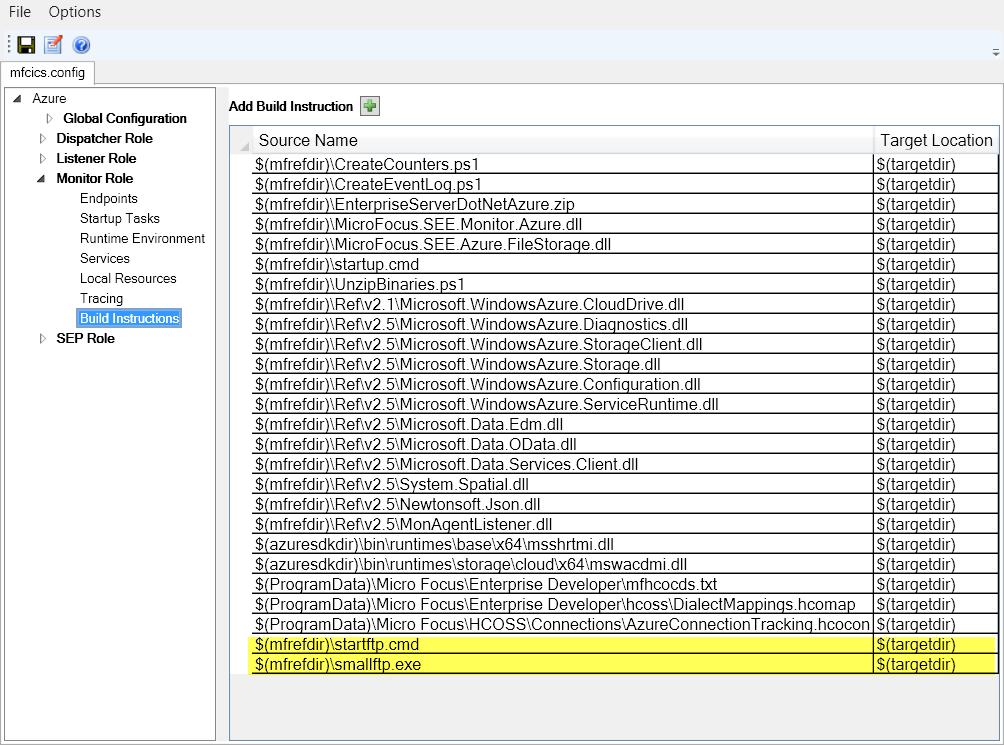





Deploying artifacts ( programs, mapsets etc) to an azure drive running under a Enterprise Server for .NET Azure instance can be done in a number of ways .
Use the AZCopy tool provided by Microsoft.
Install an FTP server onto the monitor roles and use it to move files backwards and forwards .
:file_check REM seemap.cmd is created when the share is made available by the role startup processing. IF EXIST seemap.cmd (GOTO file_exists) ELSE (timeout 5 >NUL) GOTO file_check :file_exists REM Map the drive call seemap v: d: REM Extract the archive e:smallftp -o"d:\" -y REM Change to the ftp directory and start the server. cd smallftp start xlight -startall :eof


Deploy the system to Azure. When the monitor roles are running, you should be able to ftp to your ftp server using <Service>.cloudapp.net on port 21. Port 21 is exposed as part of the default deployment on the monitor role for this purpose.
Once an ftp server is online, you can move files backwards and forwards using an ftp client.
You can also use the seedeploy tool as discussed in cmd seedeploy using the cdrv:// url syntax. The seedeploy tool for File Storage use is reliant on the ftp server being available.


